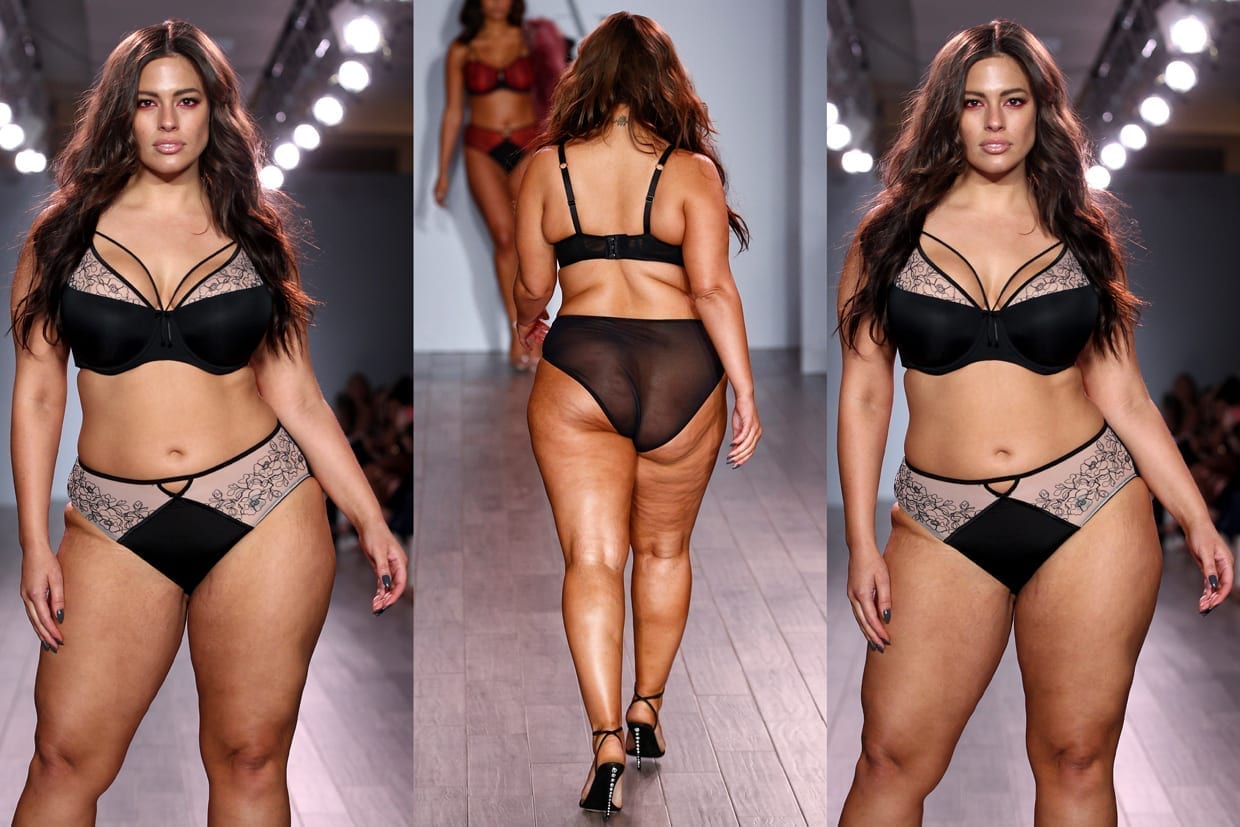It is almost summer, which means rosé and warm nights, but it also an often dreaded term: swimwear. I have cellulite (even writing those words feels a little scary) and for over a decade I have been saying “I just don’t feel like getting in the water” every time I am presented with a pool or an ocean. This summer, I have decided to say screw it: It is 90 degrees and I am jumping in. But first I have to make peace with my thighs.
I am not the only woman that goes to great lengths to hide her cellulite. It affects everything from clothing choices to sex. Kelly* says she often asks her partner to get her a glass of water after sex, not because she is thirsty but because it gives her a window to quickly get dressed. Melissa* has not worn a bathing suit bottom or tried clothes on in a communal changing room (a la Loehmann’s) in over two decades, and Julie* told me that in the early stages of her relationship, she would back away from the bed to the utter confusion of her boyfriend.
“I love bright, printed leggings,” Ali* says, “but I always end up wearing my black ones because they’re more forgiving; you can’t see as many bumps.”
Right around the time my own cellulite started to appear, I was listening to the Ben Folds Five song (it was the early 2000s and I was deep in a pop-rock phase) where he sings, “[Stephen] lost points with the ladies for saying he could never love a woman with cellulite.”
Well, shit. I am a woman with cellulite, I thought, and that will be a deal-breaker for some people. It has taken me almost 15 years since then to be open with a partner about my cellulite, to walk around my own house in my underwear.
It is estimated that between 80 and 90 percent of women have cellulite. Body-positive celebrities like Ashley Graham and Hilary Duff have started to usher cellulite into the public — err, Instagram — eye.
https://www.instagram.com/p/BPthBsNAK8O/
Cellulite is often referred to as orange-peel skin because of its texture. Board-certified plastic surgeon Joshua Zuckerman, M.D., F.A.C.S., says it is “caused by the interaction of subcutaneous fat and fibrous connective tissue. In medical terms, it is the herniation of the fat through retaining ligaments, or in other words, the fat ‘pokes through’ the fibrous connective tissue. These ligaments connect to the fascia, tough connective tissue under the skin, and introduce tension creating dimples. Cellulite is overwhelmingly common and even affects some men.”
Cellulite may be exacerbated by genetic factors, hormones and age (as collagen decreases over time, skin becomes thinner with weaker connective tissue, so cellulite becomes not necessarily more plentiful, but more visible). It is found in every body type, including naturally lean and muscular women. It is extremely normal, inevitable even, but the women who have cellulite are still in hiding, changing their clothes awkwardly in a bathroom stall at the gym, or taking the full bedsheet with them from the bed to the bathroom as Chloe* told me she does. “It’s weirder than it looks in all those rom-coms,” she added.
Who can blame us for hiding our cellulite? We are told, by a medical study no less, that “the presence of cellulite is an aesthetically unacceptable cosmetic problem for most post-adolescent women.” A second study claims, “cellulite is a skin alteration … on the thighs, buttocks and sometimes lower abdomen and upper parts of the arms of otherwise healthy women.” Otherwise healthy women. Unacceptable cosmetic problem. For the longest time, this was the internalized message of the rapidly growing cellulite treatment industry, which wants us to believe that cellulite is something to cure.
Imagine if one day, the beauty industry decided that having brown eyes was an “unacceptable cosmetic problem.” I hope we would squash that quickly, as there is no way to permanently alter the appearance of brown eyes, and there is nothing problematic about them health-wise or otherwise. And here is the truth: There is no forever fix for cellulite. There is no cure. It is not going away and it is not something that we need to fix. There are more women with cellulite than there are women with brown eyes.
https://www.instagram.com/p/BO5O2ofDk5I/
It is one thing to logically understand that cellulite is a normal part of being female. It is another thing to actually be comfortable with its appearance on your body. On my quest to rock a bathing suit comfortably this summer, I turned to the experts to find out what steps women can take to make peace with their cellulite.
- Registered dietitian Erin Brown, whose practice focuses on body positivity and self-love, suggests trying a social media cleanse. “Unfollow accounts that promote an ideal body type, portray perfect bodies, or make you feel bad about yourself,” she says. There are some social media accounts that may actually promote cellulite-positivity like #cellulitesaturday, which has over 5000 posts of women embracing their bodies as is.
- “Confront your fear by wearing a swimsuit/short/skirt while having fun with friends,” Brown says. “Start with a small group of your trusted friends, the ones who love you for you and you feel comfortable with.”
- Certified mental health expert Adina Mahalli, M.S.W., says, “your figure, cellulite included, is not who you are. Cut yourself some slack and get rid of the negative inner voice that tells you that your cellulite is ugly or unhealthy.”
- Emily James, M.P.H., certified eating psychology coach and holistic health coach says, “It’s important to recognize that almost all women have cellulite regardless of their weight or body type. Even thin women have cellulite! We don’t see this in the media because there are several ways to cover this perceived flaw (Photoshop, makeup, self-tanner). My first tip is a reality check because cellulite is very common and it’s okay. It has nothing to do with the health state of your body.”
- “[Re-evaluate] your self-worth as more than appearance,” James says. “Exploring and recognizing how wonderful you are as a person and that you are so much more than your body or in this case, your cellulite … is especially important for those of us who have defined our worth by our weight or body size.”
- “Start looking for and identifying things you do like about your body and appearance,” James says. “Challenge yourself to do this on a daily basis. Ultimately, what we look for we find. Once we can start to focus on what we do like instead of what we don’t like, some real shifts can occur.”
For cellulite to become shame-free, we need to start seeing it IRL. The only people who have the power to normalize cellulite are the people who have cellulite. It is normal, so let’s act like it is. I will see you in the pool this summer (and in the communal dressing room, trying on bright leggings).







